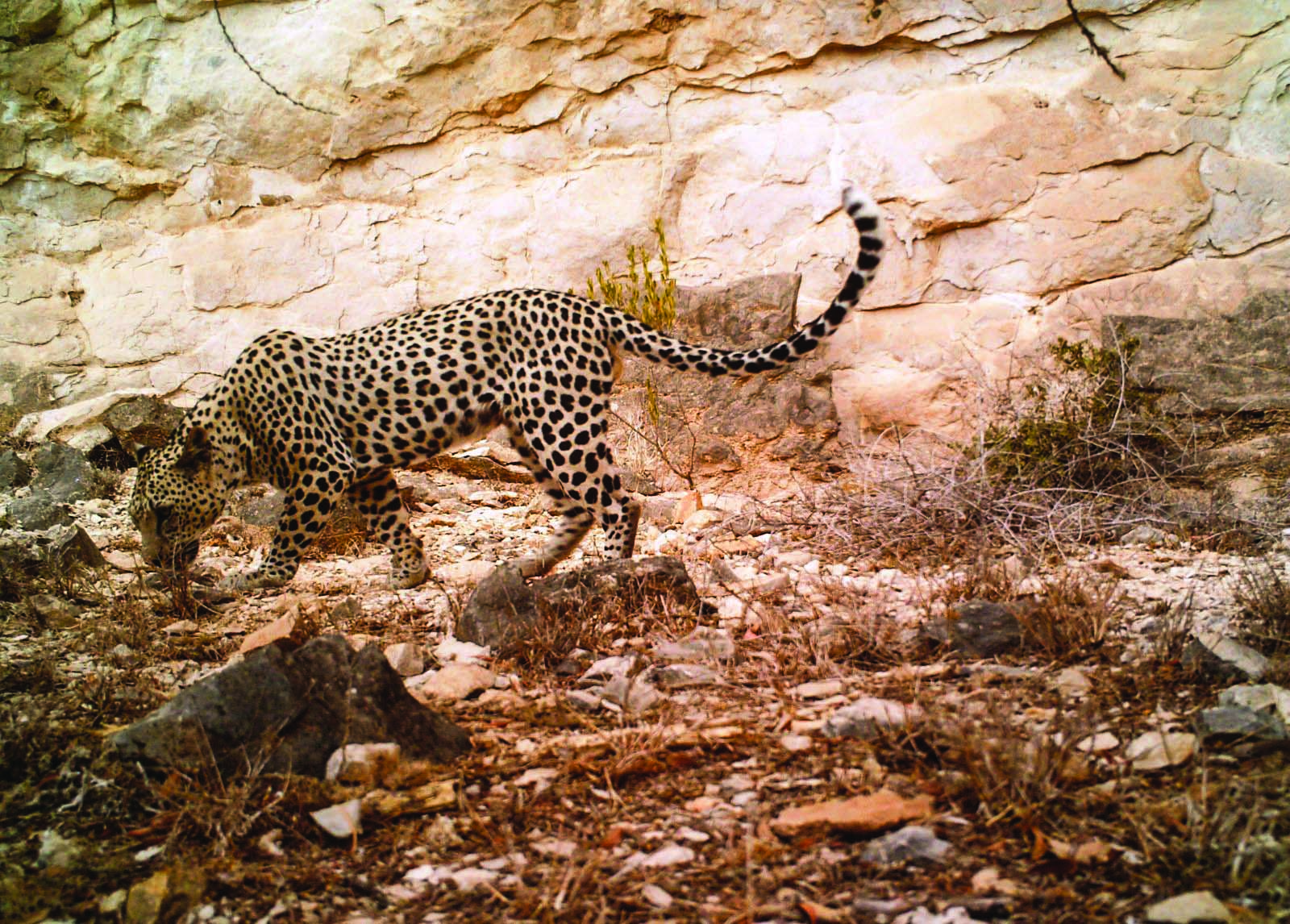
Muscat: With fewer than 200 Arabian leopards now roaming the wild, one Omani zoologist is taking steps to ensure the majestic cat does not become extinct.
The animal has been listed as Critically Endangered on the International Union for Conservation of Nature’s (IUCN) Red List of animals that are close to extinction.
Hadi Al Hikmani is a wildlife specialist with the Office for Conservation of the Environment, which is under the jurisdiction of the Diwan of the Royal Court of Oman. He is currently leading the field efforts of the Arabian Leopard Project, which he has been a part of for the last 10 years.
The project aims to provide scientific data on available leopards, in terms of populations and habitats. With verified populations only found in Oman and Yemen, Al Hikmani says one of the main reasons for the fall in the number of the big cats is human encroachment into their habitat.
“They used to be seen throughout the region, from Palestine in the north-west to Oman in the south-east of Arabia,” said Al Hikmani. “But now they have disappeared from over 98 per cent of their historical range. In Oman, they are now only found in the Dhofar mountains.
“The Dhofar mountains are now considered to be their last stronghold in the world,” added Al Hikmani, who is writing his PhD on the population and genetics of the Arabian leopard at the University of Kent in the UK.
“The illegal killing of the leopard and the species they hunt for food, as well as urbanisation since the 1960s and 1970s, has led to a loss of habitat for the leopard.
“Limestone quarrying in the leopard habitat and human disturbances in Dhofar have also contributed to the decline of the leopard,” he said. “Frankincense harvesters are also a threat to the leopard, because they are pushing it out of its natural areas and towards towns, where it will come into contact with humans and attack their livestock. This causes other people to kill them in revenge for their loss of livestock.”
When it comes to conserving the Arabian leopard, though, Al Hikmani says plenty is being done.
In Oman, the leopard is protected from hunting and capture by Ministerial Decision 101/02 and Royal Decrees 111/96, 75/98, 114/2001 and 6/2003.
Under Royal Decree 6/2003, the penalty for the hunting or capture of leopards is imprisonment for not less than six months, and not exceeding five years, and a fine of not less than OMR1,000 and not exceeding OMR5,000.
“Our study in Oman has recorded only 35 individuals, and we estimate the population in Dhofar to be between 44 to 58 leopards,” he said.
“Based on the historical range and distribution, we feel that there might have been more in the past, but they have been restricted to some small areas along the
mountains.
“The best solution is for people not to settle in these areas,” he added. “Even if frankincense harvesters are setting up camp, it is best that they do so in areas away from where the leopards live.”
“Fortunately, the Oman government is taking steps, and we’ve seen newborns, and the population is breeding. The leopard still has hope, especially in Jabal Samhan, which has all the elements to conserve leopards. We also have a nature reserve in Jabal Samhan. It is one of the largest nature reserves in Oman and has the only established leopard habitat in Oman,” he explained. “There are some 20 to 25 leopards in the Jabal Samhan nature reserve.
“We have done a lot of work in raising awareness about the Arabian leopard in Oman in local schools and the local communities,” said Al Hikmani. “Through international schemes, the first ever film on the Arabian leopards was completed by our office, we have published a book on Arabian leopards in Oman, we have also published in many international and scientific journals to raise the profile about the Arabian leopard, and we’ve seen that it has contributed towards our efforts in conserving leopards in Oman.
“Hopefully the leopard in Oman will not go the same way as the cheetah, the last of which was seen in 1976.”